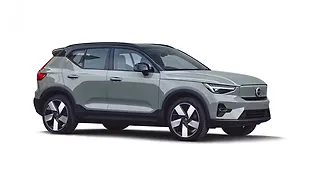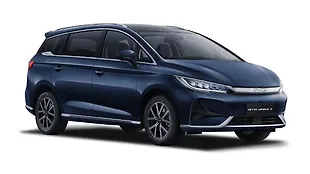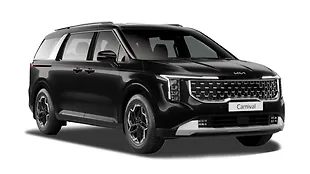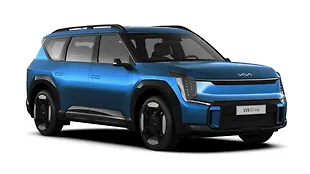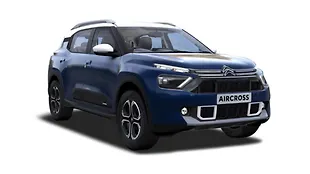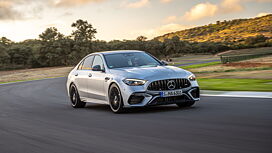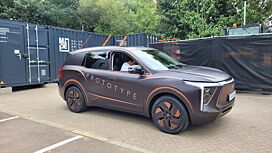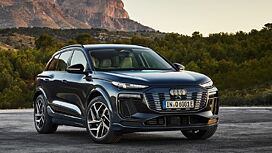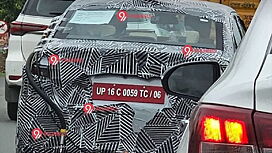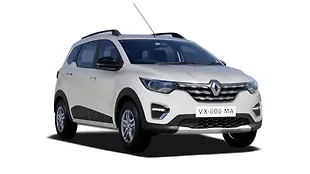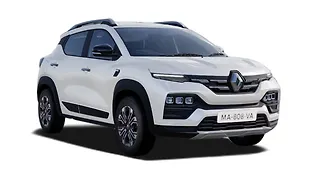Introduction
The Renault Kiger is easily the most important car for Renault since the launch of the Kwid in 2015.It is Renault’s fighter in the incredibly competitive sub-four-metre B-SUV segment. It is the hottest one in the market today, with ten cars fighting for segment share, making it the place to be if you want volumes. And that brings us to our next point, which is the idea behind this story. Now we have driven the Kiger on multiple occasions since it was launched and what are doing here is summarising our experiences by telling you five things we liked about the Renault Kiger and two things we think Renault needs to work on when updating the car in the future.
Positives
Performance
The Renault Kiger is offered with two petrol engines- a 1.0-litre naturally-aspirated three-pot petrol that produces 71bhp and 96Nm and can be had with a five-speed manual or 1.0-litre turbo petrol that produces 98bhp and 160Nm with the manual gearbox and 152Nm with the CVT.

Having driven both engines and their gearbox options, this turbo petrol with the CVT feels like the most cohesive one. We suspect that the car was designed with this combination as the priority with all the others following it in terms of product development. It might be down on torque as compared to the manual but you don’t feel it lacking in any way and in fact peak torque is delivered much earlier allowing you to build up speed in a quicker manner. There’s no manual control but you get a low mode useful for maximum torque delivery. You also get three drive modes and depending on which one you choose, it changes the way the throttle responds.

We tested this engine and achieved the 20-80kmph sprint in 5.94 seconds while the 40-100kmph sprint was achieved in 7.79 seconds. The all-important 0-100kmph was done in 10.72 seconds, an impressive figure for a car in this part of the market. We did a real-world fuel efficiency test and got a mileage of 10.38kmpl city, 17.38kmpl highway and a combined number of 12.04kmpl. For the record, Renault claims a figure of 18.24kmpl for this engine and gearbox combination.
Easy manoeuvrability in city conditions

The Renault Kiger scores big in terms of ease of use in city conditions thanks to the light steering, compact footprint and lovely visibility all around. The steering is light and easy to use despite it going three turns from lock to lock. That’s not an issue at all when making U-turns in tight spots or parallel parking in a limited space. From the RTX version onwards you get a reverse camera which is useful even though the resolution is not that great and there are no dynamic grid lines.
This brings us to the next two points- compact footprint and visibility- With the former it’s easy to find parking as well as to judge gaps when you need to filter your way through traffic. This is of course aided by the driving benefits offered by the two-pedal nature of a CVT as well as 205mm ground clearance that makes easy work of most of what our roads throw up in terms of bumps, potholes and imperfections. As you can see, there are no blind spots at the C-pillar and with a large glasshouse, you get a great view all around.
Interior space

At 3991-meters with a wheelbase of 2500-meters, the Kiger is on par with all of its segment rivals and while that may not seem like a win initially, it’s a good thing for the car as it matches up to the rest putting itself in the view of buyers scanning the market. The front seats are very comfortable and have good side bolstering for both passengers. You get height adjustment for the seat and tilt adjustment for the steering from the second level RXL trim onwards and there’s a decent amount of headroom and legroom for both occupants.

The second row is best suited to two adults due to its low shoulder room but makes up for it with decent under-thigh support as well legroom and knee room thanks to a generous amount of space under the front seats. The boot is large at 405-litre but the design of the car has a high loading lip and this means you will more often than not be resting heavy bags and boxes on the sill before loading into the boot.
Exterior design

Looks are generally subjective but there’s no denying that the Kiger is a nice looking car. It has that quirkiness associated with cars and stands out thanks to the angular shapes, curvy lines and bright colours. Upfront, you have the large double-slat Renault logo dominating the face while the projector headlights sit low down.

In the profile, you can see the black coloured roof and these swanky looking 16-inch machined alloy wheels. At the rear, you get these nice C-shaped tail lamps and black cladding running between the lights.
Safety

All versions of the Renault Kiger get dual front airbags, rear parking sensors, ABS with EBD and a load limiter and pre-tensioner for the driver’s seat only. The RXT version and up gets four airbags as standard. What’s more in the latest round of GNCAP safety tests, the dual airbag version of the Kiger scored a four-star safety rating for adult occupant protection and two stars for child occupant protection.
Negatives
Interior Quality

The Kiger is a good looking car and has enough design elements both inside and outside to help it stand out but there’s no getting away from the fact that Renault has had to make a few hard decisions when it comes to quality versus cost. It's an entry-level SUV and still has a few rough edges here and there. The quality isn’t as great as say what one would find say in a Hyundai Venue or Kia Sonet and some of the plastics are unfortunately hard and scratchy and feel a segment down.

Many components look to be carried over from the more affordable and lower-priced Kwid which is nice for the Kwid owner but not so much for someone paying significantly more. These are not a deal-breaker, but the rivals in this segment offer better quality.
Feature list

At the time of writing this story, the Kiger got a major update in terms of features now adding things like wireless charging, wireless smartphone connectivity, air purifier and cruise control to the list. However, even the top-of-the-line RXZ CVT turbo dual-tone model misses out on features like ventilated seats, 360-degree camera, tyre-pressure monitoring system and connected car technology. These are all feel-good features that have now started cropping up across the segment in various cars. Of these, the Nissan Magnite, which is Kiger’s sister car, offers both a 360-degree camera and TPMS with its top-spec models.
Conclusion

So there you have it, five things that work in favour of the Renault Kiger and two things we think Renault could work on to improve the car. The Renault Kiger lineup, at the time of writing the story, was in the range of Rs 6.15 lakh to Rs 12.10 lakh (on-road Delhi).
Photography: Kapil Angane & Kaustubh Gandhi

![Renault Kiger [2022-2023] Right Front Three Quarter Renault Kiger [2022-2023] Right Front Three Quarter](https://imgd.aeplcdn.com/642x361/n/cw/ec/122471/renault-kiger-right-front-three-quarter1.jpeg?isig=0&wm=1&q=80)
![Renault Kiger [2022-2023] Right Front Three Quarter Renault Kiger [2022-2023] Right Front Three Quarter](https://imgd.aeplcdn.com/642x361/n/cw/ec/122471/renault-kiger-right-front-three-quarter11.jpeg?isig=0&wm=1&q=80)
![Renault Kiger [2022-2023] Right Side View Renault Kiger [2022-2023] Right Side View](https://imgd.aeplcdn.com/642x361/n/cw/ec/122471/renault-kiger-right-side-view2.jpeg?isig=0&wm=1&q=80)
![Renault Kiger [2022-2023] Left Rear Three Quarter Renault Kiger [2022-2023] Left Rear Three Quarter](https://imgd.aeplcdn.com/642x361/n/cw/ec/122471/renault-kiger-left-rear-three-quarter10.jpeg?isig=0&wm=1&q=80)
![Renault Kiger [2022-2023] Left Side View Renault Kiger [2022-2023] Left Side View](https://imgd.aeplcdn.com/642x361/n/cw/ec/122471/renault-kiger-left-side-view5.jpeg?isig=0&wm=1&q=80)
![Renault Kiger [2022-2023] Left Side View Renault Kiger [2022-2023] Left Side View](https://imgd.aeplcdn.com/642x361/n/cw/ec/122471/renault-kiger-left-side-view6.jpeg?isig=0&wm=1&q=80)
![Renault Kiger [2022-2023] Front View Renault Kiger [2022-2023] Front View](https://imgd.aeplcdn.com/642x361/n/cw/ec/122471/renault-kiger-front-view4.jpeg?isig=0&wm=1&q=80)
![Renault Kiger [2022-2023] Dashboard Renault Kiger [2022-2023] Dashboard](https://imgd.aeplcdn.com/642x361/n/cw/ec/122471/renault-kiger-dashboard3.jpeg?isig=0&wm=1&q=80)
![Renault Kiger [2022-2023] Image Renault Kiger [2022-2023] Image](https://imgd.aeplcdn.com/272x153/n/cw/ec/115135/kiger-exterior-right-front-three-quarter-4.jpeg?isig=0&q=80)









